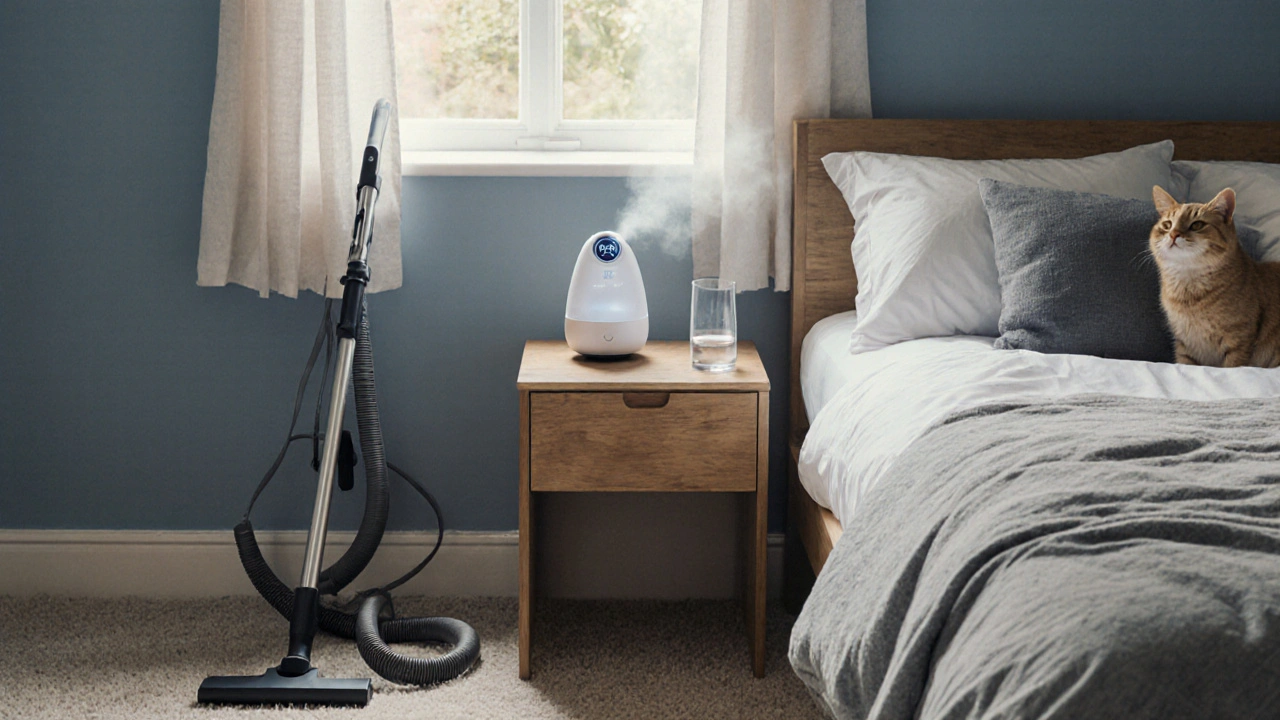Eczema Environmental Triggers: What to Watch For and How to Cut Them Out
If you’ve ever struggled with an itchy, red rash that comes and goes, you know how frustrating eczema can be. While genetics play a role, what surrounds you often decides when the skin decides to act up. Below we break down the most common indoor and outdoor culprits and give you real‑world tips you can start using today.
Common Indoor Triggers
Most people spend most of their day inside, so the indoor environment has a big impact. Here are the usual suspects:
1. Dust Mites – These tiny critters love warm, humid places. Their waste can tick off eczema. Use allergen‑proof covers on pillows and mattresses, wash bedding weekly in hot water, and keep humidity below 50% with a dehumidifier.
2. Pet Dander – Cats, dogs, even small rodents shed skin flakes that can irritate sensitive skin. If you have pets, keep them out of bedrooms, vacuum with a HEPA filter, and bathe them regularly.
3. Mold – Dark, damp spots in bathrooms, basements, or behind appliances breed mold spores. Fix leaks quickly, clean grout with a vinegar solution, and consider an anti‑mold spray for persistent areas.
4. Harsh Cleaning Products – Many disinfectants contain fragrances or alcohol that strip skin’s natural barrier. Switch to fragrance‑free, dye‑free cleaners or make your own mix of water and baking soda.
5. Air Quality – Indoor smoke, strong odors, or volatile organic compounds (VOCs) from paints and new furniture can flare eczema. Open windows when possible, use an air purifier with a HEPA filter, and avoid smoking indoors.
Quick win: set a timer to clean high‑traffic surfaces with a gentle, fragrance‑free wipe once a week. The habit helps keep dust and chemicals at bay without a huge time commitment.
Outdoor Triggers & Seasonal Tips
When you step outside, you’re exposed to a whole new set of irritants. Knowing them lets you plan ahead.
1. Pollen – Spring and early fall bring high pollen counts that can aggravate eczema, especially on exposed skin. Check local pollen forecasts, wear long sleeves, and rinse off with cool water after a long walk.
2. Temperature Swings – Sudden changes from hot to cold (or vice versa) can dry out skin fast. Dress in layers you can add or remove, and keep your hands and feet covered when it’s chilly.
3. Sun Exposure – While a bit of sun can help some eczema types, too much UV can burn and worsen the rash. Use a broad‑spectrum sunscreen with at least SPF 30 on exposed areas, and reapply after swimming or sweating.
4. Pollution – Car exhaust, smog, and industrial particles cling to clothing and skin. If you live in a high‑traffic area, try a breathable mask on bad air days and change out of outdoor clothes quickly.
5. Water Quality – Hard water leaves mineral deposits on skin, making it itchier. Install a shower filter or rinse with filtered water after a bath.
Practical tip: keep a small “eczema kit” in your bag – fragrance‑free moisturizer, a gentle wipe, and a sunscreen stick. When you feel a flare creeping up, a quick moisturize can stop it before it spreads.
By spotting these triggers and taking simple steps—like using a dehumidifier, swapping cleaners, or layering clothing—you can reduce the number of flare‑ups and give your skin a break. It won’t erase eczema overnight, but cutting out the obvious irritants makes the condition far more manageable.

